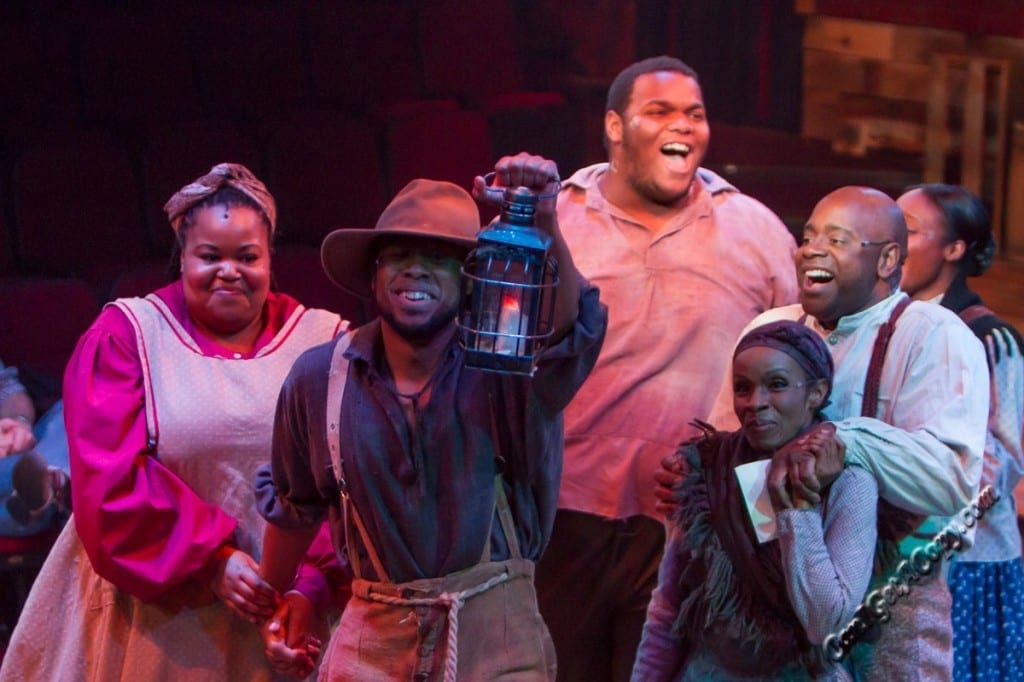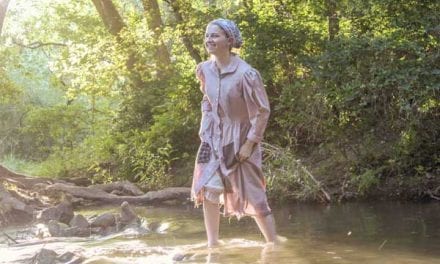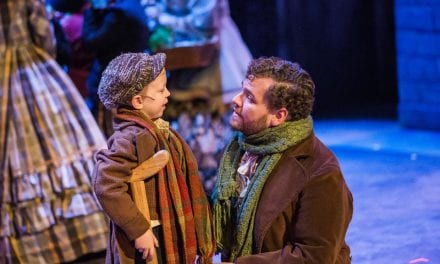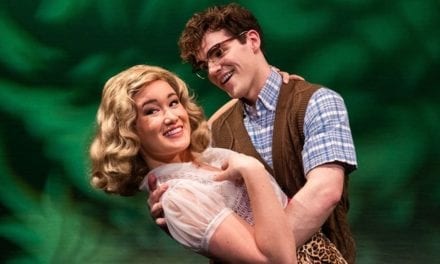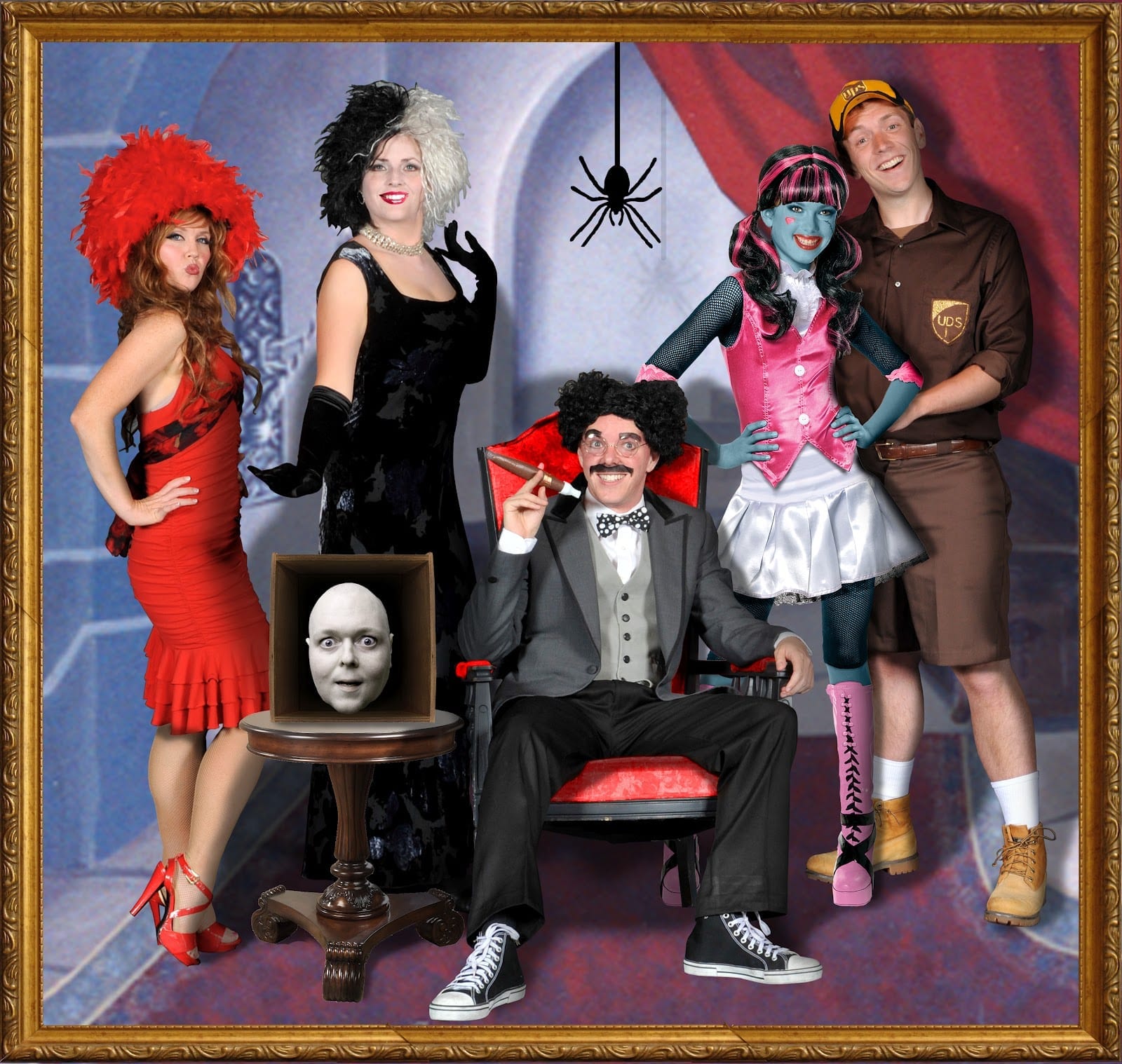OREM — “The Civil War is not history, not historical drama, not fiction, not conventional narrative. It is most definitely not intended to be a traditional musical play,” says author Gregory Boyd as quoted in Hale Center Theater Orem’s (HCTO) playbill. This production most closely resembles a song cycle, a form in which thematically similar songs by the same composer (Frank Wildhorn) are presented together. In this case, the theme is the American Civil War as experienced through a combination of Union soldiers, Confederate soldiers, a handful of civilians, and the enslaved.
The purpose of this genre of musical theatre is often not to tell a story, but to convey an emotion. In this production, the apex of that emotion was the Act II opener, “How Many Devils.” In contrast to the first act’s “By the Sword/Sons of Dixie” in which the Union and Confederate soldiers joined together to express excitement about their war service, this time the soldiers join to express disappointment, resignation, and utter exhaustion. This number featured many soloists from among the armies’ ranks, each of whom brought a unique style to the solo. Through each diverse voice, it became apparent that while despair may have been the overarching emotion in the camps, that despair was unique to each individual.
In a way, many moments of this production felt like a bit of a battle. In each case, the actors emerged victorious, but not without their share of fighting for it. Cody Hale as Confederate Captain Billy Pierce struggled to command the stage in the show’s early numbers, but his laid back drawl and heartfelt delivery were perfectly suited for his solo, “Virginia.” In the roles of the enslaved, Carleton Bluford, Kevin Giddins, Alec Powell, Lita Little Giddins, Mackenzie Seiler, and Traci Aker each had various levels of success in their individual solos. But together in the gospel sections of “Someday” and “River Jordan,” their energy and talent seemed to multiply exponentially. Confederate Sergeant Virgil Franklin (played by (David Matthew Smith) and Union Sergeant Patrick Anderson (played by Brian Jensen) may not have had exceptional solos during “The Day the Sun Stood Still,” but under the music direction of Korianne Orton Johnson and with Wildhorn’s beautiful score, their harmonies stood out as one of the best duets of the evening.
But there were also moments that stood out as clear wins. Rick Priddis as Union Captain Emmett Lochran began the show accompanying himself on live guitar during “Brother, My Brother.” The harmonies among the soldiers were consistently tight and well-balanced. I particularly enjoyed Scott Sackett‘s (as Confederate Private Sam Taylor) soaring tenor, easily recognizable after having heard his “How Many Devils” solo. One actress whose delivery seemed to take no effort was Stacia Hardy as Sarah McEwen. From the moment Sarah was introduced in “A House Divided,” through her playful delivery of “Missing You (My Bill),” and to her heartbreak in “The Honor of Your Name,” Hardy’s rich voice was equally matched with the range of emotions she portrayed on the stage. The monologues that occasionally separated songs were delivered poignantly by strong, believable characters, especially in the case of “Ain’t I a Woman,” (Giddins) and the introductory monologue by Elizabeth Dabczynski-Bean before “I Never Knew His Name.”
In many of the great moments, the work of director Neal C. Johnson and choreographer Nathan Balser was readily apparent. The staging and choreography in “By the Sword/Sons of Dixie” provided good physical contrast to highlight the differences between the Union and Confederate armies. Throughout the production, various characters entered moments before their scene, took their places, and began to act before their lights came up. This detail helped make the characters more believable, as though I was watching each scene as it truly happened. I enjoyed watching the nurses (Hardy, Dabczynski-Bean, and Amanda Crabb) complete necessary chores while delivering “I Never Knew His Name.” And the choreography during “How Many Devils” contributed largely to the number’s emotional success. There were a few drawbacks, however. The physical exchanges between Clayton (K. Giddins) and Bessie (L. Giddins) during “If Prayin’ Were Horses” seemed unnatural and forced. And there were a few moments during the show when characters acting in the southwest corner of the stage were completely blocked from my view.
Scenic design (Bobby Swenson), lighting (Cody Swenson), and sound (Swenson and Hale) overcame a number of challenges with varied amounts of success. Despite replacing the north section of seating with two raised platforms, the stage often felt too small for the scope of the production. However, a small rising pedestal near the center of the stage provided a simple but effective way to draw attention to soloists amid the supporting cast. The lighting was used effectively to change from night to day and from location to location. My favorite use of lighting was during the fighting near the end of Act I; flashes of light timed to bullet sounds created the feel of the battlefield. As for the sound, it seemed a bit inconsistently balanced throughout the night. While the music and various voices seemed to complement each other during large chorus numbers, the music was frequently louder than the soloists during more intimate numbers.
It isn’t often that the playbill designer receives credit for the contributions to the production. But in this case, the beautiful eight-page spread (designed by Red Rider Creative) featuring historical information about the Gettysburg Address, slavery, women in the Civil War, and a collection of relevant quotes and photographs did as much to set the stage as did Penny Jones‘s beautiful scenic floor painting featuring the words of the Declaration of Independence. Combined, the program and scenic painting helped put the songs and monologues into the appropriate historical context.
The playbill further quotes Boyd stating, “As we wrote . . . we would try to see with the eyes of Americans long dead and ask ourselves the same questions they died for: What is Freedom? What is Faith? What is Country?” Johnson and the staff and cast of this HCTO production have created a perfect environment to sit and reflect on these questions. Whether you identify most with Sarah’s struggles as a war widow, with Frederick Douglass’s (Bluford) fight for justice, with the separation of Clayton and Bessie, or with the hardships of the enlisted soldiers, the emotions conveyed through The Civil War are as personal as they are universal.

